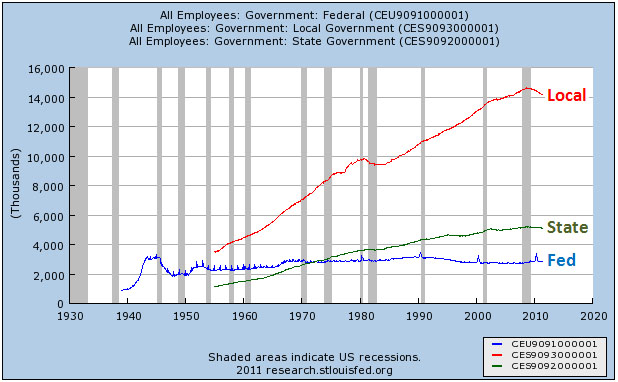Karl Smith, Matt Yglesias, Paul Krugman, and others have a bunch of good charts today showing that public sector employment has fallen pretty dramatically over the past three or four years. Karl estimates that compared to trend growth, government at all levels has shed about 2 million jobs. So as Paul Krugman says, “When you hear Republicans saying that what we need to do to create jobs is slash government spending and cut government payrolls, that’s exactly what has been happening for the past year, as the Obama stimulus has faded out.”
But here’s another chart. It’s not as dramatic as the others because it covers a longer time period, but it shows something important: federal employment really isn’t all that important. It’s been relatively flat for the past four decades, while the real action in public sector employment has mostly been at the state and local level. So when conservative politicians rail against the explosion of the federal bureaucracy, they’re wrong on multiple counts. It’s mostly local government jobs that have grown over the past few decades, and it’s mostly local government jobs that have been lost over the past few years — and this has acted as a huge drag on the economy. If stimulus money should be going anywhere, that’s where it should be going.
















